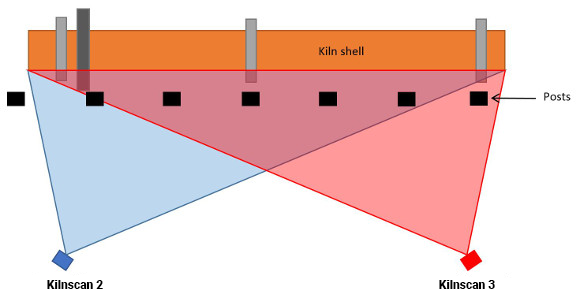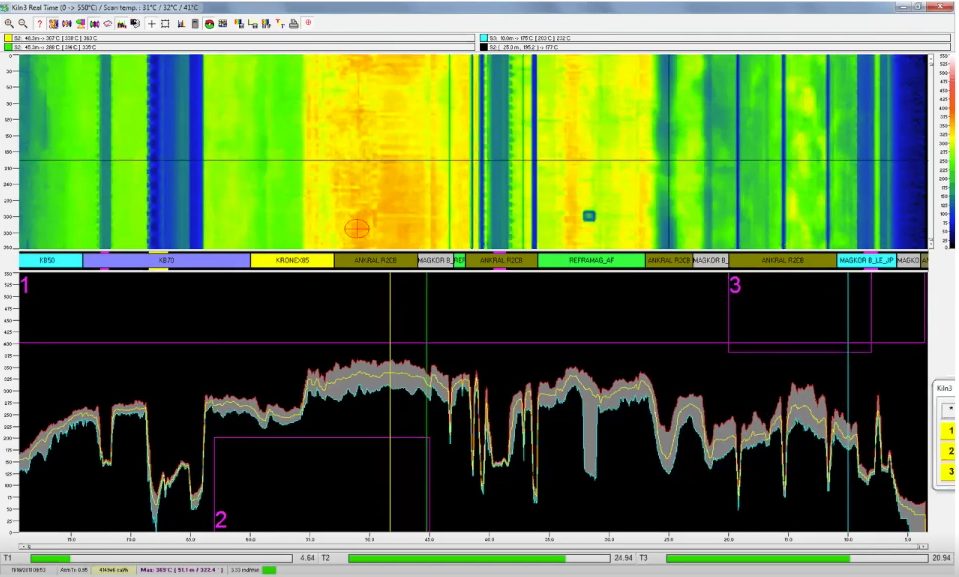In cement production, rotary kilns are widely used to convert raw materials into cement clinker. The use of high temperatures to initiate the chemical and physical reactions in the material can cause significant damages to the kiln. Hence protecting the shell is paramount to prolonging the life of the equipment and avoid a major repair. Thermography imaging systems such as line scanners are used to monitor in real time the temperature of the shell ensuring maximum plant operating reliability.
Tasek cement plant in Malaysia aims to monitor the overall temperature of their 500 tpd rotary kiln no 3 to prevent any interruption in production due to hot spots. The cement plant shows a complex layout including many posts and pillars masking the shell. A portion of the kiln is also located under a building.
These obstructions prevent the infrared scanner from seeing the entire kiln shell and generate shadows. The plant has hence to find a solution to ensure temperature monitoring even in difficult to see areas on kiln.
> Read our case study on advanced kiln shell temperature monitoring

A customized infrared (IR) scanners configuration provides full kiln temperature monitoring, along with the elimination of shadows thanks to advanced thermal images recombination feature.
For the Tasek cement plant, the best recommended thermal monitoring solution involves 3 Kilnscan scanners, each with a large field of view of 140°.
Whilst the first scanner measures the temperature of the portion of the kiln located inside the building, the second and third scanners aim to scan the same portion of the shell and especially address the concern of shadowed areas that stretch along this part of the kiln. The thermal image is then reconstructed by combining the data from these two scanners, eliminating shadows for a perfect full monitoring of the shell.


An integrated interface displays all relevant thermal features such as 3D thermal profile, brick and coating thickness, refractory management, kiln rotating speed, tyre slip monitoring, heat loss calculation and more. The software has been designed to maximize user experience providing simple set up and use. It provides accurate alarms on critical parameters such as hot spots detection and brick and coating thicknesses.
Thanks to the historical data management, operators can follow up temperature trends, predict the lifetime of refractory material and schedule replacements with minimal downtime.
HGH Kilnscan is the ideal kiln shell scanner providing high performance and flexibility to technically demanding cement plants. Robust and highly flexible, Kilnscan is designed to fit any kiln configuration, including multiple shadows, long kiln and free space limited. It is part of the must-have temperature monitoring equipment of any cement plants.








HGH is a electro-optical devices global provider. The company provides wide area surveillance, industrial thermography and electro-optical test solutions.